NORCAL DENTAL SERVICES
Click on each title below for more information.
Arestin, Perio Stat Treatments
Under the supervision of a dentist. These medications can be applied or prescribed to help your gums respond where cleanings alone, aren’t sufficient.
Athletic Mouthwear
In sporting activities there is a great need to protect your smile. Anyone who participates in a sport that carries a significant risk of injury to teeth, lips, cheek and tongue, should wear a mouth protector. This includes a wide range of sports like football, hockey, basketball, baseball, gymnastics, and volleyball.
A properly fitted mouth protector will stay in place while you are wearing it, making it easy for you to talk and breathe.
There are three types of mouth protectors:
1. Stock
Stock mouth protectors are inexpensive and come pre-formed, ready to wear. Unfortunately, they often don’t fit very well. They can be bulky and can make breathing and talking difficult.
2. Boil and bite
Boil and bite mouth protectors can be purchased at many sporting goods stores and may offer a better fit than stock mouth protectors. They should be softened in water, then inserted and allowed to adapt to the shape of your mouth. It is extremely important to follow the manufacturer’s directions in order not to end up with a poor-fitting mouth protector.
3. Custom-fitted
Custom-fitted mouth protectors are made by your dentist for you personally. They are more expensive than the other versions, but because they are customized they can offer a better fit than anything you can buy off the shelf. They are also designed to suit the needs of the individual athlete, with various thickness indicated for different sports.
Tooth-Colored Composite Restorations
Gone are the days when tooth trauma and cavities could only be treated with unsightly metal fillings. Today, modern, tooth-colored fillings made of durable resin can be bonded to your teeth for a stronger, more natural-looking effect. Composite fillings are virtually undetectable and require only a single appointment to apply.
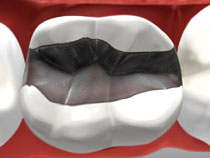
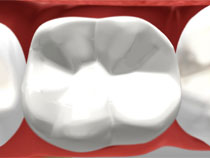
Children’s Dentistry
Crowns
Crowns are a type of dental restoration which, when cemented into place, fully covers that portion of a tooth which lies at and above the gum line. In comparison, composite fillings/inlays/onlays are dental restorations that are used to fill in or cover over just a portion of a tooth. Since dental crowns encase the entire visible aspect of a tooth, a dental crown in effect becomes the tooth’s new outer surface.
Crowns are used to rebuild broken or decayed teeth, to strengthen teeth, and as a means by which to enhance the cosmetic appearance of teeth. Crowns can be made out of porcelain/ceramic, gold alloy, or a combination of both. Dental crowns are often referred to as “dental caps”.
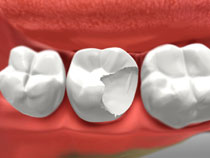
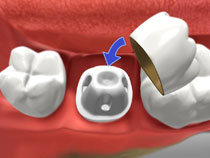
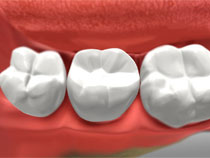
Bridges
If you are missing teeth and having trouble speaking or chewing, or are noticing strain when biting, bridges may be the ideal procedure to help make your mouth healthy and beautiful again. Bridges literally “bridge” gaps between teeth by filling them with strong, natural-looking artificial teeth. Bridges are semi-permanent – they can only be removed by a dentist – and are comfortable and proven to strengthen teeth.
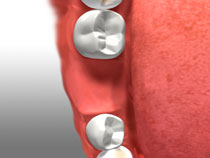
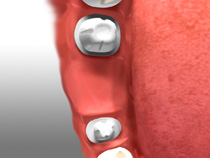
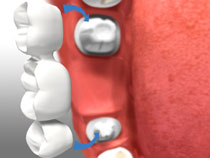

Dental cone beam computed tomography (CT) is a special type of x-ray equipment used when regular dental or facial x-rays are not sufficient. Your doctor may use this technology to produce three dimensional (3-D) images of your teeth, soft tissues, nerve pathways and bone in a single scan.
This procedure requires little to no special preparation. Tell your doctor if there’s a possibility you are pregnant. Wear loose, comfortable clothing and leave jewelry at home. You may be asked to wear a gown.
Dentures
A denture is a removable replacement for missing teeth and adjacent tissues. It is made of acrylic resin, sometimes in combination with various metals.
Types of dentures
Complete dentures replace all the teeth, while a partial denture fills in the spaces created by missing teeth and prevents other teeth from changing position.
Candidates for complete dentures have lost most or all of their teeth. A partial denture is suitable for those who have some natural teeth remaining. A denture improves chewing ability and speech, and provides support for facial muscles. It will greatly enhance the facial appearance and smile.
Complete or full dentures are made when all of your natural teeth are missing. You can have a full denture on your upper or lower jaw, or both.
Complete dentures are called “conventional” or “immediate” according to when they are made and when they are inserted into the mouth. Immediate dentures are inserted immediately after the removal of the remaining teeth. To make this possible, the dentist takes measurements and makes the models of the patient`s jaws during a preliminary visit.
An advantage of immediate dentures is that the wearer does not have to be without teeth during the healing period. However, bones and gums can shrink over time, especially during the period of healing in the first six months after the removal of teeth. When gums shrink, immediate dentures may require rebasing or relining to fit properly. A conventional denture can then be made once the tissues have healed. Healing may take at least 6-8 weeks.
An over denture is a removable denture that fits over a small number of remaining natural teeth or implants. The natural teeth must be prepared to provide stability and support for the denture.
Partial dentures are often a solution when several teeth are missing.
Removable partial dentures usually consist of replacement teeth attached to pink or gum-colored plastic bases, which are connected by metal framework. Removable partial dentures attach to your natural teeth with metal clasps or devices called precision attachments. Precision attachments are generally more esthetic than metal clasps and are nearly invisible. Crowns on your natural teeth may improve the fit of a removable partial denture and they are usually required with attachments. Dentures with precision attachments generally cost more than those with metal clasps.
How are dentures made?
The denture process takes about one month and five appointments: the initial diagnosis is made; an impression and a wax bite are made to determine vertical dimensions and proper jaw position; a “try-in” is placed to assure proper color, shape and fit; and the patient`s final denture is placed,following any minor adjustments.
First, an impression of your jaw is made using special materials. In addition, measurements are made to show how your jaws relate to one another and how much space is between them (bite relationship). The color or shade of your natural teeth will also be determined. The impression, bite and shade are given to the dental laboratory so a denture can be custom-made for your mouth.
The dental laboratory makes a mold or model of your jaw, places the teeth in a wax base, and carves the wax to the exact form wanted in the finished denture. Usually a “wax try-in” of the denture will be done at the dentist`s office so any adjustments can be done before the denture is completed.
The denture is completed at the dental laboratory using the “lost wax” technique. A mold of the wax-up denture is made, the wax is removed and the remaining space is filled with pink plastic in dough form. The mold is then heated to harden the plastic. The denture is then polished and ready
for wear.
Getting used to your denture
For the first few weeks, a new denture may feel awkward or bulky. However, your mouth will eventually become accustomed to wearing it. Inserting and removing the denture will require some practice. Your denture should easily fit into place. Never force the partial denture into position by biting down. This could bend or break the clasps.
At first, you may be asked to wear your denture all the time. Although this may be temporarily uncomfortable, it is the quickest way to identify those denture parts that may need adjustment. If the denture puts too much pressure on a particular area, that spot will become sore. Your denture
can be adjusted to fit more comfortably. After making adjustments, you may need to take the denture out of your mouth before going to bed and replace it in the morning.
Start out by eating soft foods that are cut into small pieces. Chew on both sides of the mouth to keep even pressure on the denture. Avoid sticky or hard foods, including gum. You may want to avoid chewing gum while you adjust to the denture.
Care of your denture
It’s best to stand over a folded towel or a sink of water when handling your denture, just in case you accidentally drop it. Brush the denture (preferably with a denture brush) daily to remove food deposits and plaque, and keep it from becoming permanently stained. Avoid using a brush with hard bristles, which can damage the denture. Look for denture cleansers with the American Dental Association (ADA) Seal of Acceptance. Pay special attention to cleaning teeth that fit under the denture`s metal clasps. Plaque that becomes trapped under the clasps will increase the risk of
tooth decay.
Hand soap or mild dishwashing liquid to clean dentures is also acceptable. Other types of household cleaners and many toothpastes are too abrasive and should not be used for cleaning dentures. A denture could lose its proper shape if it is not kept moist. At night, the denture should be placed in soaking solution or water. However, if the appliance has metal attachments, they could be tarnished if placed in soaking solution.
Even with full dentures, you still need to take good care of your mouth. Every morning, brush your gums, tongue and palate with a soft-bristled brush before you put in your dentures. This removes plaque and stimulates circulation in the mouth. Selecting a balanced diet for proper nutrition is also important for maintaining a healthy mouth.
Adjustments
Over time, adjusting the denture may be necessary. As you age, your mouth naturally changes, which can affect the fit of the denture. Your bone and gum ridges can recede or shrink, resulting in a loose-fitting denture. Loose dentures can cause various problems, including sores or infections.
Dentures that do not fit properly can be adjusted. Avoid using a do-it-yourself kit to adjust your dentures, as this can damage the appliance beyond repair. Glues sold over-the-counter often contain harmful chemicals and should not be used on a denture.
If your denture no longer fits properly, if it breaks, cracks or chips, or if one of the teeth becomes loose, see your dentist immediately. In many cases, dentists can make necessary adjustments or repairs, often on the same day. Complicated repairs may require that the denture be sent to a
special dental laboratory.
Over time, dentures will need to be relined, re-based, or re-made due to normal wear. To reline or re-base a denture, the dentist uses the existing denture teeth and refits the denture base or makes a new denture base. Dentures may need to be replaced if they become loose and the teeth show signs of significant wear.
Common concerns
Eating will take a little practice. Start with soft foods cut into small pieces. Chew slowly using both sides of your mouth at the same time to prevent the dentures from tipping. As you become accustomed to chewing, add other foods until you return to your normal diet.
Continue to chew food using both sides of the mouth at the same time. Be cautious with hot or hard foods and sharp-edged bones or shells.
Some people worry about how dentures will affect their speech. Consider how your speech is affected when you have a number of your natural teeth missing.
Pronouncing certain words may require practice. Reading out loud and repeating troublesome words will help. If your dentures “click” while you`re talking, speak more slowly. You may find that your dentures occasionally slip when you laugh, cough or smile. Reposition the dentures by gently biting down and swallowing. If a speaking problem persists, consult your dentist.
Denture adhesives
Denture adhesives can provide additional retention for well-fitting dentures. Denture adhesives are not the solution for old, ill-fitting dentures. A poorly fitting denture, which causes constant irritation over a long period, may contribute to the development of sores. These dentures may need a reline or need to be replaced. If your dentures begin to feel loose, or cause pronounced discomfort, consult with your dentist immediately.
Extractions
Many times when dentists talk about extractions, they’re referring to impacted wisdom teeth, which can cause discomfort, inflammation, infection, and even decay as they come into the mouth and push against other teeth. In cases like this—or in more extreme cases, where cysts develop around the wisdom teeth and jeopardize the health of the jaw bone—extraction will be the only viable option.
But when it comes to teeth other than your wisdom teeth, performing a tooth extraction is something that Stewart Wilson would consider only after doing everything else possible to save the tooth, including root canal therapy. If the tooth has been traumatized, is badly decaying, or there is excessive loss of bone around the tooth due to periodontal disease and the tooth is very mobile, then the dentist may seriously consider removing the tooth to preserve the health of the teeth surrounding it, as well as your entire mouth.
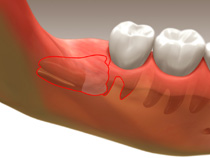
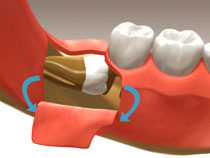
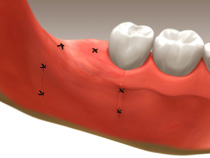
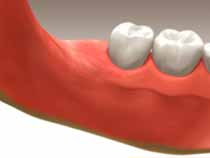
Full Mouth Restoration
Severely worn down, missing, or badly damaged teeth can truly have a detrimental effect on one’s ability to chew or to feel comfortable in social situations. Teeth marred by neglect, lack of care, and improper dentistry often require comprehensive restorative treatment, a combination of cosmetic and restorative dentistry procedures that may include periodontal therapy, endodontic treatment, veneers, bridges, crowns, implants or other dental work. Stewart Wilson offers you a full range of options to get you smiling again!
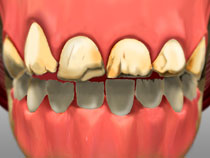
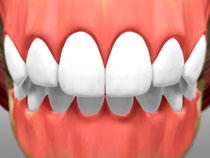
Hygiene Services
Twice-daily brushing and regular flossing are excellent for maintenance between office visits, but a healthy mouth and beautiful smile require routine general and preventative care to stay that way. Our practice offers general care that includes regular oral examinations and cleanings. Our preventative hygiene services include fluoride, professional breath control, and periodontal (gum disease) treatments designed to help you maintain your smile’s health and beauty. Keep your teeth and gums strong and disease-free. Contact our office today to schedule a cleaning or consultation.
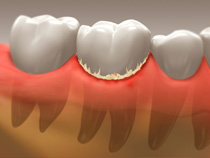
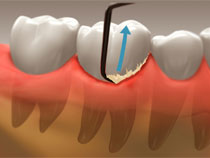
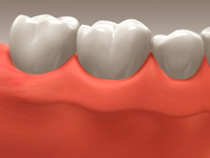
Implant Restoration
NORCAL DENTAL GROUP performs dental implant restoration by attaching artificial teeth to implants anchored in the bone below the gum line. After the anchor has been surgically placed in the jawbone, excess bone and gum grow around the implant, holding it firmly in place.
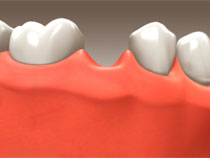
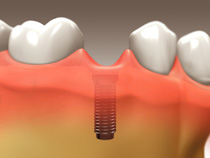
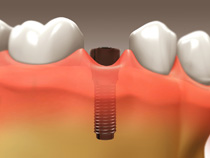
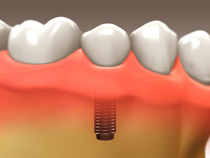
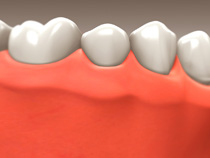
Invisalign® Invisible Braces
We are certified to provide his patients with Invisalign® invisible braces. Invisalign® uses new technology to offer you the straightest way to a great smile. The new removable invisible aligners will straighten your teeth without anyone realizing you are receiving orthodontic treatment. With Invisalign® there are no metal wires or brackets, only proven results. It is the comfortable and convenient way to straighten teeth and have a beautiful smile.

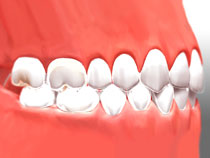
Migraine Pain Prevention
If you suffer from migraine or tension headaches, you know the pain and misery they can inflict. But what if there was a cost-effective, drug-free way to help you reduce or avoid your headaches altogether? DR. RAJVIR BHOGAL may be able to help, by fitting you for a stabilization sprint—a small, comfortable mouthpiece that helps keep you from clenching your teeth while you’re asleep.
Stabilization splints have been proven to reduce headache triggers, like abnormal muscle contractions and teeth grinding, by nearly 70%. Because they’re small and unobtrusive, they don’t engage your gag reflex like other mouth appliances can.
Stabilization splints are also a viable option for you if you find yourself grinding your teeth, feeling pain in your jaw muscle, or just wanting to give your teeth’s biting surfaces and surrounding hard tissues some protection while recovering from dental trauma or a dental procedure. Why not contact NORCAL DENTAL GROUP today and see if stabilization splints may be a good option for you?
Mini Implants
A method of stabilizing loose complete dentures all in one day.
Oral Cancer Screening
Only a Dentist can detect oral cancers
Oral cancer is one of the most common cancers today and has one of the lowest survival rates, with thousands of new cases being reported each year. Fewer than half of all people diagnosed with oral cancer are ever cured.
Moreover, people with many forms of cancer can develop complications-some of them chronic and painful-from their cancer treatment. These include dry mouth and overly sensitive teeth, as well as accelerated tooth decay.
If oral cancer is not treated in time, it could spread to other facial and neck tissues, leading to disfigurement and pain.
Older adults over the age of 40 (especially men) are most susceptible to developing oral cancer, but people of all ages are at risk.
Oral cancer can occur anywhere in the mouth, but the tongue appears to be the most common location. Other oral structures could include the lips, gums and other soft palate tissues in the mouth.
Warning Signs
In general, early signs of oral cancer usually occur in the form of lumps, patchy areas and lesions, or breaks, in the tissues of the mouth. In many cases, these abnormalities are not painful in the early stages, making even self-diagnosis difficult.
Here are some additional warning signs:
- Hoarseness or difficulty swallowing.
- Unusual bleeding or persistent sores in the mouth that won’t heal.
- Lumps or growths in other nearby areas, such as the throat or neck.
If a tumor is found, surgery will generally be required to remove it. Some facial disfigurement could also result.
Prevention
Prevention is the key to staving off oral cancer. One of the biggest culprits is tobacco and alcohol use. Certain kinds of foods and even overexposure to the sun have also been linked to oral cancer. Some experts believe certain oral cancer risk factors are also hereditary.
A diet rich in fruits and vegetables is one of the best defenses against oral cancer. Maintaining good oral hygiene, and regular dental checkups, are highly recommended.
Porcelain Inlays and Onlays
Porcelain inlays and onlays are a very aesthetic alternatives to composite fillings. They have a high degree of strength, and as such, are excellent for restoring weakened back teeth. Inlays and onlays protect and restore large portions of decayed, heavily restored tooth, or teeth under very heavy load (i.e. back teeth). Unlike crowns, they only cover a portion of the tooth, and are therefore more conservative on the amount of tooth preparation required.


They are made with porcelain, customized to your natural tooth shade, and look like your natural tooth. Porcelain inlays and onlays are made from the same strong, tooth colored material that is used for crowns and bridgework. A customized shade makes them virtually undetectable. The main differences between tooth-colored composite restoration and inlay/onlays is that the latter are fabricated using a laboratory process and differing materials, thereby making them stronger and more durable.
Root Canal Therapy
Each of our teeth contains a long, thin strand of dental pulp—which provides the tooth with nutrients and nerves—that extends down to the tooth’s root. If the pulp becomes infected or injured, the tooth’s nerves die and, often, without endodontic treatment, the tooth dies as well. Root canals are designed to save such damaged teeth.
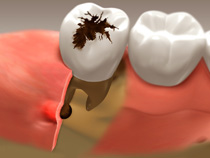
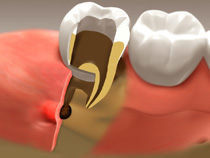
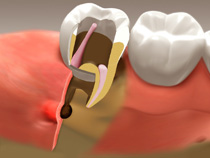
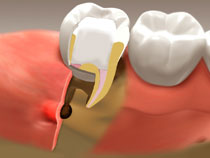
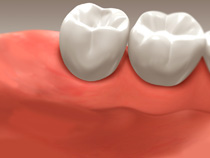
During the procedure, a gap is drilled into the tooth’s crown and pulp chamber, diseased pulp is reshaped or removed, and the tooth is permanently sealed with a gold, porcelain, or tooth-colored inlay/onlay or crown.
Sedation
General Anesthesia
Also called sleep dentistry, general anesthesia can relieve pain and anxiety by making a patient unconscious during dental procedures. For patients with intense dental fear or those who need major dental procedures, sleep dentistry presents an option that is both comfortable and practical.
If you and the dentist determine that your case is right for sleep dentistry, the dentist may use oral medication or IV sedation. Sleep dentistry has helped many patients overcome the barriers created by profound anxieties about dental procedures that stand in the way of optimal oral health.
Oral Conscious Sedation
To relieve the very real and often debilitating anxiety associated with dental phobia, we also offer oral conscious sedation, known as sedation dentistry. Patients who feel stressed about dental work, as well as those who need multiple procedures performed in one visit, benefit from conscious sedation.
The procedure involves taking an oral sedative prior to your visit, then receiving nitrous oxide (laughing gas) to supplement the sedative’s effects. Your vital signs and comfort level are keenly monitored throughout your visit.
Nitrous Oxide and how does it work?
Commonly referred to as laughing gas, nitrous oxide is used in surgery and dentistry for its pain blocking and reducing effects. It is known as “laughing gas” due to the euphoric effects of inhaling it. The administration of nitrous oxide is used to enhance patient comfort and relieve anxiety for patients of all ages. The gas (a nitrous oxide and oxygen mixture) is inhaled through a face mask. The amount of gas that you receive is monitored and controlled by the dentist to ensure your safety. You will begin to relax and will not recognize pain, so the dentist can perform your dental work while you stay completely comfortable. The effects of nitrous oxide decrease once the mask is removed, such that if the gas is the only anesthesia that you receive, you will very likely be capable of driving yourself home following the visit and can continue your daily activities as normal.
Using N2O (Nitrous Oxide), or prescribed medicine. We can offer you an option allowing you to get the dentistry you want or need without the anxiety.
IV Conscious Sedation
While IV sedation can be used for general anesthesia (to induce a state of unconsciousness), it can also be used for conscious sedation. This type of sedation induces an altered state of consciousness, also known as a “twilight” state, which is a groggy state of mind and a relaxed body. This form of sedation minimizes pain and discomfort through the use of pain relievers and sedatives. Patients who receive conscious sedation usually are able to speak and respond to verbal cues throughout the procedure, communicating any discomfort they experience to the dentist. While you are under the effects of the drug, the dentist can perform your dental work, and you will remain comfortable. A brief period of amnesia may erase any memory of the procedure. After your procedure(s), you will need a ride home from the dental office. The following day, the sedative will clear the body so that you can resume daily activities.
Teeth Whitening
Many of us feel that our smiles are most striking when our teeth look especially white, but unfortunately, soft drinks, coffee, tea, and tobacco can leave behind ugly stains. To help you restore your gleaming, bright white smile and to give you an added boost of confidence, we offer many options, such as custom whitening kits. Please contact us today to find out more about these options and which one is best for you.
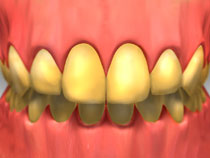
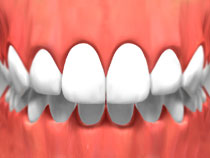
TMJ (TMD) Therapy
Many suffer from Tempromandibular Joint pain or Tempromandibular Dysfunction. Symptoms include:
- Pain on opening.
- Inability to open wide or move from side to side comfortably
- Neck and shoulder pain.
- Ear pain, hearing loss.
- Ringing in the ears.
- Clenching, night grinding
- Chronic fatigue
- Noise, grating or popping in joint
- Chronic Temporal or occipital headache
- Chronic Temporal or occipital headache
Treatment of these problems can be complicated. The cause can often be multi-factorial. Successful treatment may involve other professionals; Physiotherapy, Chiropractors, Massage Therapy, Cranio-mandibular specialists, and Physicians.
Meaningful treatment begins with proper diagnosis. We will do a thorough evaluation of your problem to determine the best way that we can help and the appropriate therapy.
Veneers
A conservative procedure usually requiring minimal anesthesia, veneers are an excellent option to improve the appearance of front teeth. These extremely thin shells of either composite resin filling material, or the more durable ceramic (porcelain), are bonded to the teeth.
Whether enhancing tooth color or shape, masking discolorations, closing moderate spaces, or straightening out minor crowding, veneers can be an excellent alternative to full crowns to create pleasing and esthetic smiles. They have the added advantage of requiring less tooth preparation than full crowns.
Cases involving front teeth with deep staining (eg. discoloration of teeth due to exposure to the antibiotic tetracycline- in utero or in infancy), older discolored fillings, damage due to injury or wear, or unattractive gaps or minor crowding of front teeth may only require a few appointments to achieve pleasing cosmetic results that last for years.
Wisdom Teeth
If wisdom teeth are causing a problem and are not pulled, they can sometimes become impacted. Impacted wisdom teeth can be extremely painful, as well as harmful to your oral health. Symptoms are easy to spot: pain, inflammation, and some kinds of infections.
Many people need to have their wisdom teeth extracted to avoid future serious problems. In general, the lack of the four wisdom teeth does not hamper one’s ability to properly bite down, speak or eat.
We offers the option of in-house extraction or day surgery and a general anesthetic is administered by a doctor on staff.
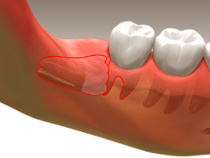
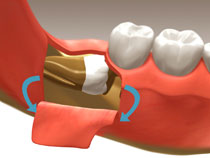
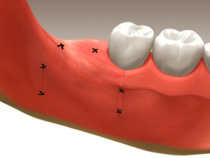
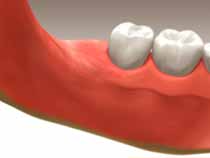
X-Rays
When X-rays pass through your mouth during a dental exam, more X-rays are absorbed by the denser parts (such as teeth and bone) than by soft tissues (such as cheeks and gums) before striking the film or x-ray sensor (in the case of digital x-rays). This creates an image on the radiograph. Teeth appear lighter because fewer X-rays penetrate to reach the film. Cavities and the resultant bone loss from gum disease appear as darker areas because of more X-ray penetration. The interpretation of these X-rays allows the dentist to safely and accurately detect hidden abnormalities.
How often dental X-rays (radiographs) should be taken depends on the patient`s individual health needs. It is important to recognize that just as each patient is different from the next, so should the scheduling of Xray exams be individualized for each patient. Your medical and dental history will be reviewed and your mouth examined before a decision is made to take X-rays of your teeth.
The schedule for needing radiographs at recall visits varies according to your age, risk for disease and signs and symptoms. Recent films may be needed to detect new cavities, or to determine the status of gum disease or for evaluation of growth and development. Children may need X-rays more often than adults. This is because their teeth and jaws are still developing and because their teeth are more likely to be affected by tooth decay than those of adults.
